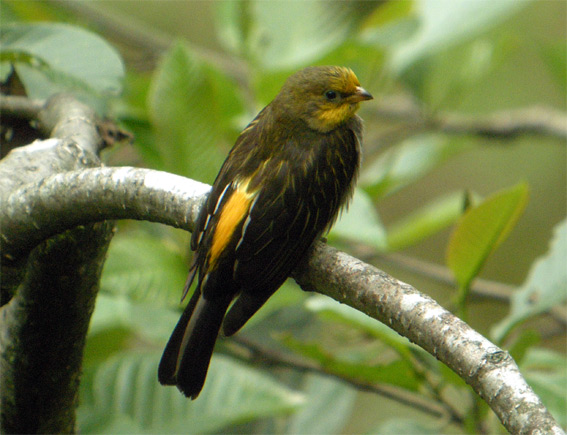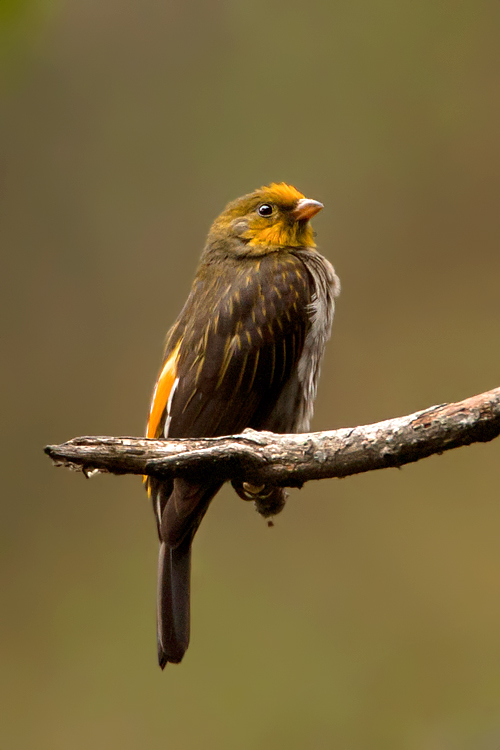
Indicator xanthonotus
TAXONOMY
Blyth 1842
OTHER COMMON NAMES
English: Indian honeyguide, orange-rumped honeyguide;
French: Indicateur а dos jaune; German: Gelbbьrzel-Honiganzeiger;
Spanish: Indicador Hindъ.
PHYSICAL CHARACTERISTICS
5 in (15 cm). Most brightly colored honeyguides. Both sexes
adorned with golden caps and more gold on the throat and
lower back; female’s gold patches not as extensive as male’s.
Remainder of livery for both sexes is gray and olive-green.
DISTRIBUTION
Foothills of the southern Himalayas, from Afghanistan to
Burma.
HABITAT
Forests up to 7,000 ft (2,134 m) above sea level, in coniferous,
dry deciduous, and lowland tropical rainforests.
BEHAVIOR
No song has been noted. Instead, males stake out territory in
forests near rock cliffs where the preferred honey producers,
rock bees (Apis dorsata), build their nests in fissures well off the
ground. Males feed off wax of chosen nest, while guarding and
defending the valuable food source against rival males, and enticing
females with the promise of food.
FEEDING ECOLOGY AND DIET
Wax and other comb ingredients in rock bee nests; also flycatch
winged insects. Males perch alone in a tree near a honeycomb,
erect or hunched, for hours.
REPRODUCTIVE BIOLOGY
Females parasitize local species of woodpeckers and barbets.
CONSERVATION STATUS
Listed as Near Threatened. Threats include deforestation and
increased human consumption of rock bee honey.
SIGNIFICANCE TO HUMANS
None known.
Photo Gallery of - Yellow-rumped honeyguide




 Animalia Life
Animalia Life